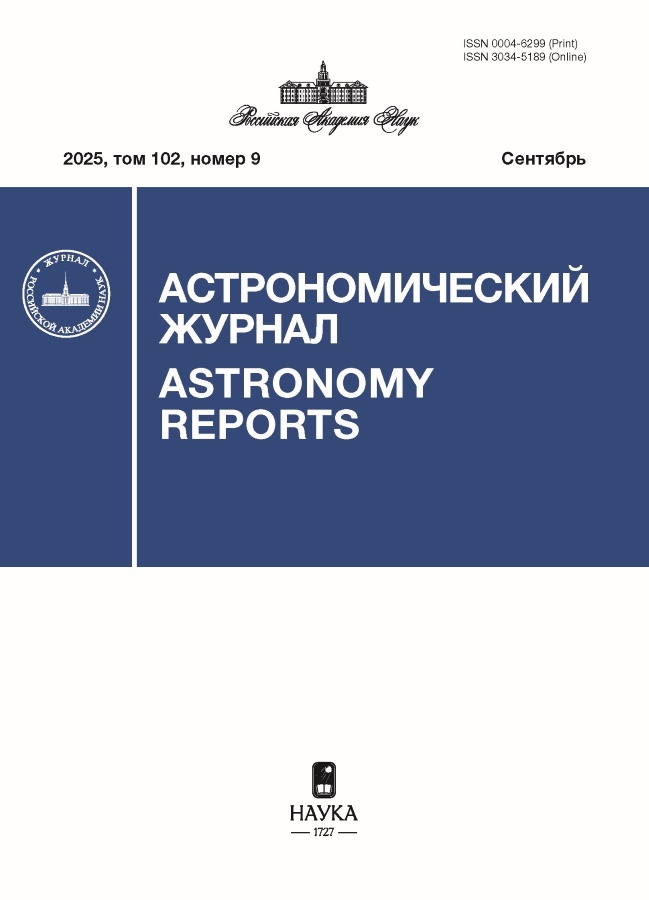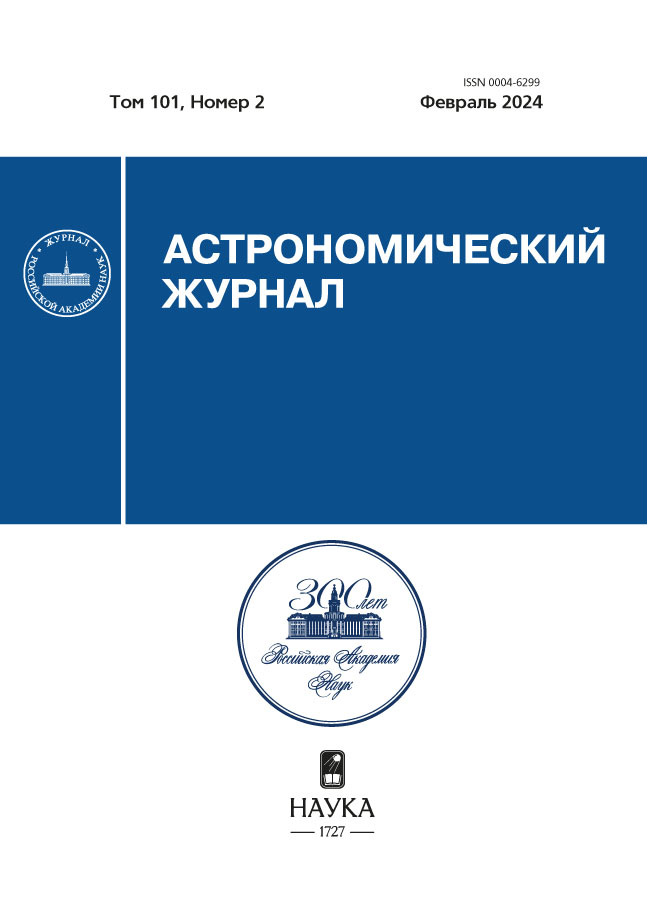Распределение холодных пятен на поверхности красного карлика V647 Her
- Авторы: Бондарь Н.И.1, Антонюк К.А.1,2, Пить Н.В.1, Алексеев И.Ю.1
-
Учреждения:
- Крымская астрофизическая обсерватория РАН
- Специальная астрофизическая обсерватория
- Выпуск: Том 101, № 2 (2024)
- Страницы: 137-143
- Раздел: СТАТЬИ
- URL: https://rjmseer.com/0004-6299/article/view/647609
- DOI: https://doi.org/10.31857/S0004629924020068
- EDN: https://elibrary.ru/KTBJQU
- ID: 647609
Цитировать
Полный текст
Аннотация
Представлен анализ фотометрических наблюдений звезды V647 Her (M3.5V), проведенных в 2022 г. на 1.25 м телескопе Крымской астрофизической обсерватории. Подтверждено присутствие малоамплитудной переменности блеска звезды с периодом 20.69 дней, обнаруженного по наблюдениям 2019 г., показано, что с понижением блеска звезда становится более красной. Наблюдаемый характер фотометрической переменности обусловлен присутствием холодных пятен на поверхности звезды и проявлением вращательной модуляции блеска с полной амплитудой не более 0m.05. Выполнено сравнение результатов фотометрии 2019 г., 2022 г. и 2004 г. По фазовым кривым определены зоны концентрации пятен в разные эпохи. Распределение пятен сохраняется в течение 40–100 дней. В рамках зональной модели получены оценки параметров пятен. Температура пятен 2700–2800 К, занимаемая ими площадь в 2004 г. составляла 15% от полной площади поверхности звезды, в 2019 г. и 2022 г. — возросла до 30%, различие между запятненностью полушарий вследствие сезонного перераспределения пятен составляет менее 2%.
Ключевые слова
Полный текст
Об авторах
Н. И. Бондарь
Крымская астрофизическая обсерватория РАН
Автор, ответственный за переписку.
Email: otbn@mail.ru
Россия, Научный
К. А. Антонюк
Крымская астрофизическая обсерватория РАН; Специальная астрофизическая обсерватория
Email: otbn@mail.ru
Россия, Научный; Нижний Архыз
Н. В. Пить
Крымская астрофизическая обсерватория РАН
Email: otbn@mail.ru
Россия, Научный
И. Ю. Алексеев
Крымская астрофизическая обсерватория РАН
Email: otbn@mail.ru
Россия, Научный
Список литературы
- E.W. Weis, Astron. J. 101, 1882 (1991).
- N. Samus, O. V. Durlevich, et al., VizieR Online Data Catalog: II/ 250 (2004).
- N.I. Shakchovskaya, W. Sofina, Inf. Bull. Var. Stars, No.730 (1972).
- L.H. Quiroga-Nuñez, H.T. Intema, J.R. Callingham, J. Villadsen, H.J. van Langevelde, et al., Astron. and Astrophys. 633, id. A130 (2020).
- G. Chabrier, and I. Baraffe, Astron. and Astrophys. 327, 1039 (1997).
- J. Morin, J.-F. Donati, P. Petit, X. Delfosse, T. Forveille, and M.M. Jardine, Monthly Not. Roy. Astron. Soc. 407, 2269 (2010).
- S.L. Baliunas, A.H. Vaughan, L. Hartmann, F. Middelkoop, D. Mihalas, et al., Astrophys. J. 275, 752 (1983).
- A. J. Norton, P. J. Wheatley, R. G. West, C. A. Haswell, R. A. Street, et al., Astron. and Astrophys. 467, 785 (2007).
- M. Kiraga, and K. Stępień, Acta Astron. 57, 149 (2007).
- M. Kiraga, Acta Astron. 62, 67 (2012).
- N.I. Bondar’, M.M. Katsova, and M.A. Livshits, Geomagnetism and Aeronomy 59 (7), 832 (2019).
- N.I. Bondar, K.A. Antonyuk, and N.V. Pit, Astrophysics 65 (4), 4833 (2022).
- I.Y. Alekseev, and R.E. Gershberg, Astron. Zhurn. 73 (4), 589 (1996).
- N.I. Bondar, Astron. and Astrophys. Trans. 31(3), 295 (2019).
- P.J. Amado, C.J. Butler, and P.B. Byrne, Monthly Not. Roy. Astron. Soc. 310, 1023 (1999).
Дополнительные файлы
















